The Samsung Galaxy Note5 and Galaxy S6 edge+ Review
by Joshua Ho on October 2, 2015 8:00 AM ESTSystem Performance Cont'd
Now that we’ve covered some of the traditionally CPU-bound tests, we can start to look at tests that more strongly emphasize GPU performance. It’s worth noting here that while 3DMark is supposed to determine gaming and graphics performance, the overall score includes a CPU performance component in the form of a physics test that means it isn't much of a pure GPU test.
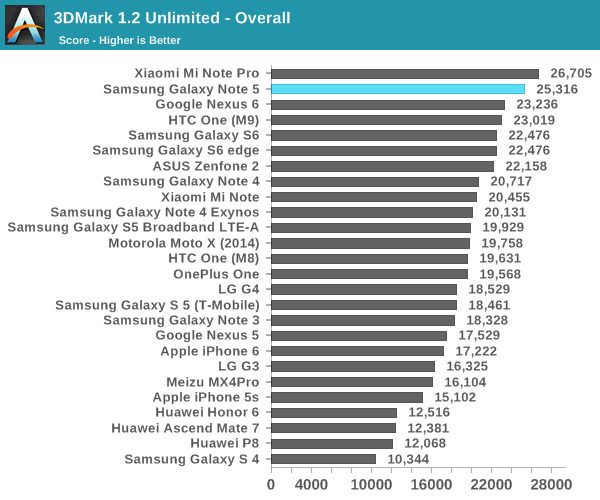
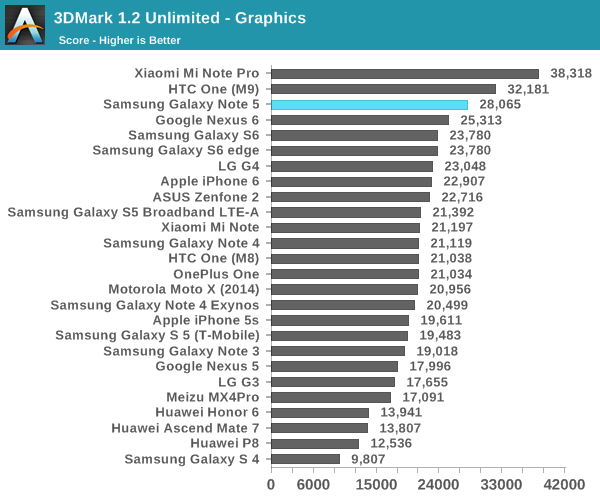
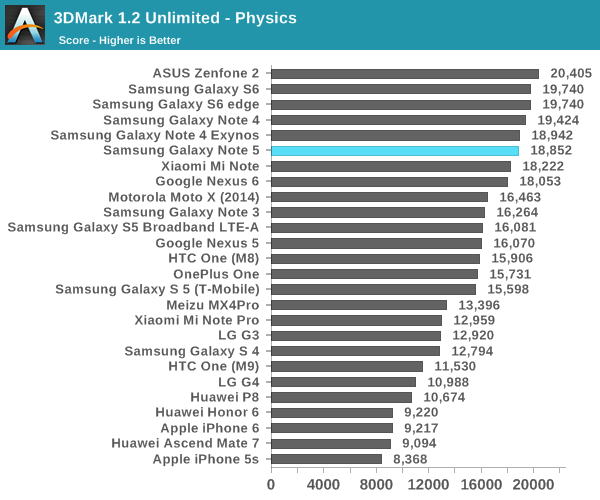

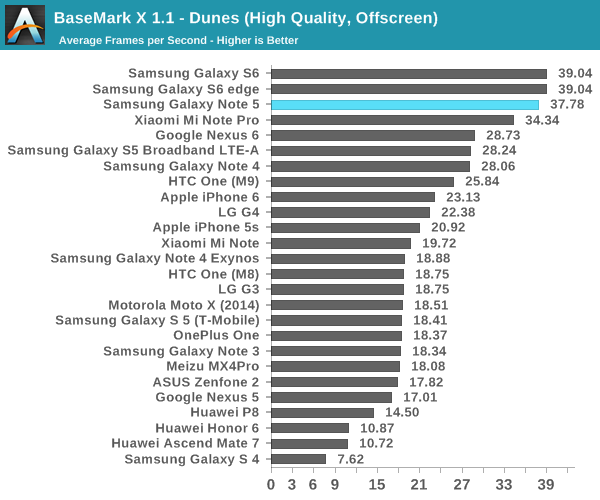
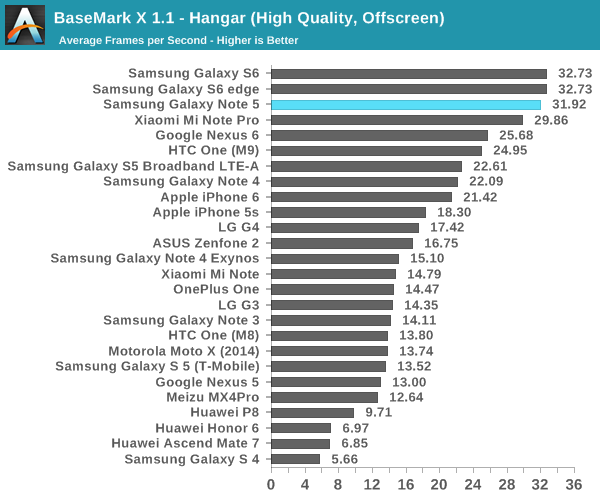
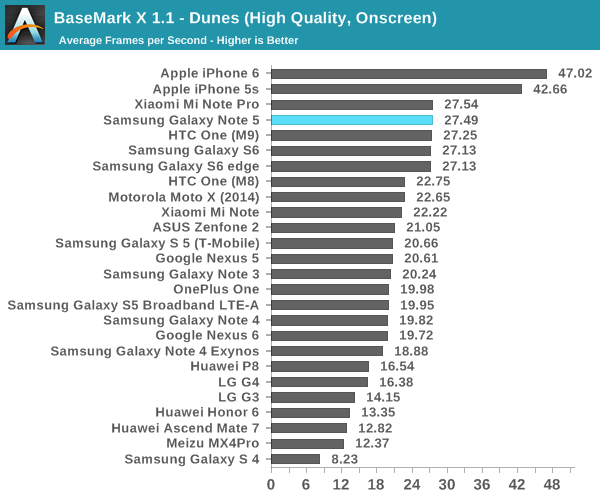
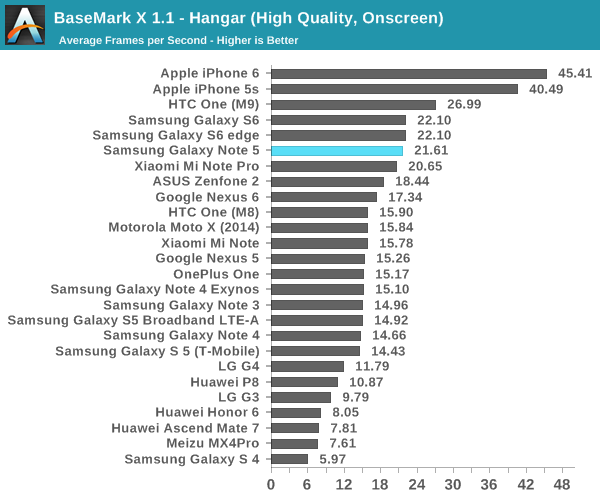
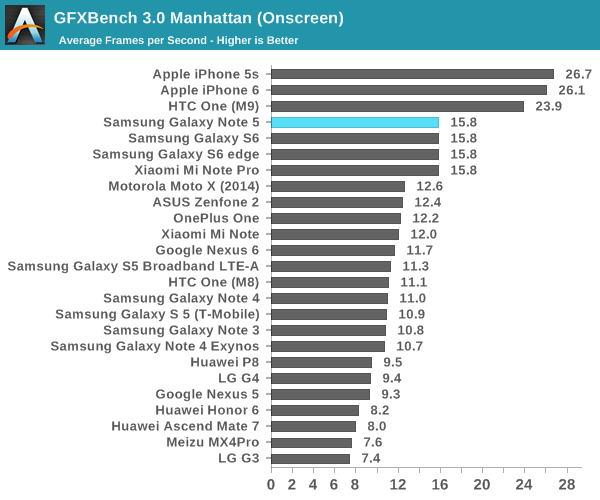
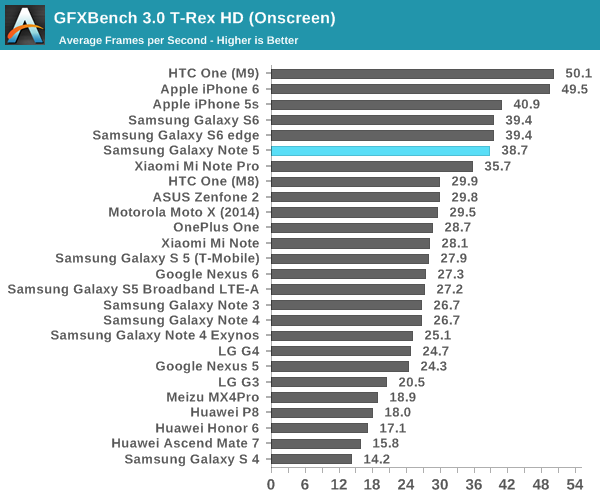
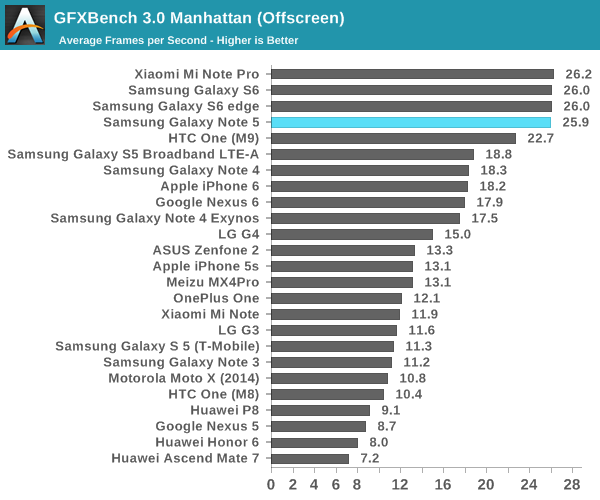
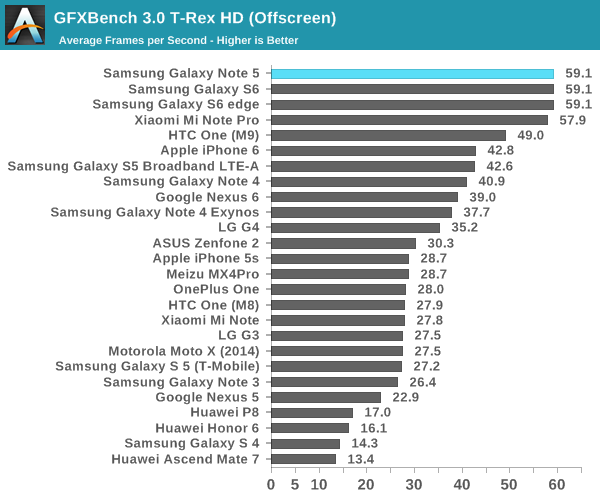
Overall, there's nothing really surprising about these results. The Exynos 7420 should continue to deliver great GPU performance for anyone interested in a high-end phablet or smartphone. There are some improvements in 3DMark in regards to graphics performance, but it's likely that we're just looking at newer drivers as the GPU doesn't heat up fast enough for throttling to be affecting these results.
NAND Performance
At this point, it’s probably not a surprise to know that NAND performance can have very real effects on user experience. If an OEM decides to skimp heavily on storage in order to drive the price down, it’s at least somewhat likely that the device will start to exhibit major IO pauses at some point in the device lifecycle. In order to test this, we rely on our standard storage tests which include Androbench with some custom settings to get more realistic test results along with StorageBench for iOS which is comparable to Androbench.
In the case of the Galaxy Note5 we’re still looking at a UFS storage solution similar to what was found in the Galaxy S6, but it looks like this is slightly newer as the storage is identified as a Toshiba THGLF2G8J4LBATDA chip rather than the Samsung variant that was found in the Galaxy S6. It’s unclear whether Samsung is now multi-sourcing UFS storage for their mobile devices or what distribution exists here.
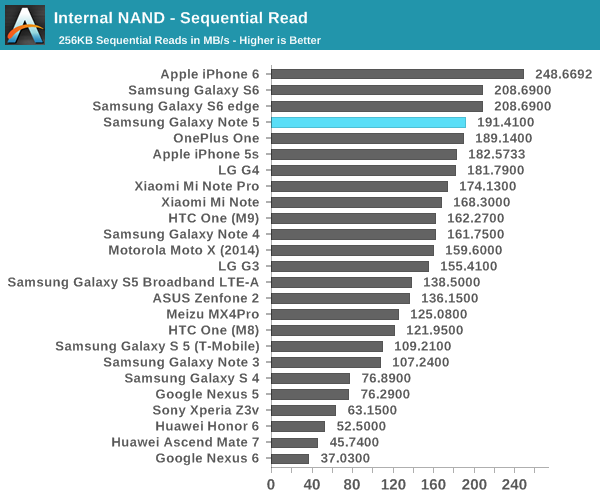
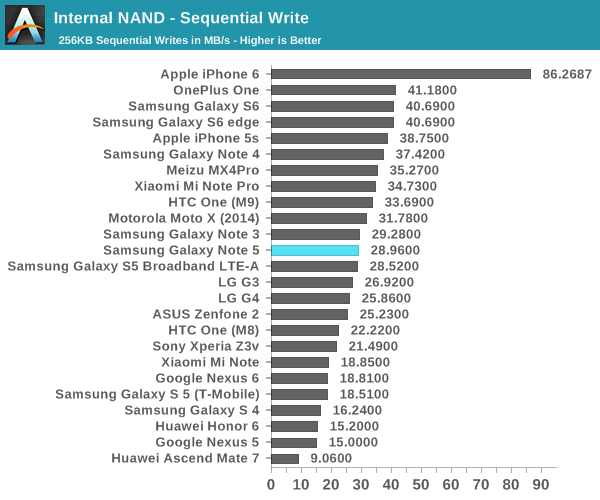
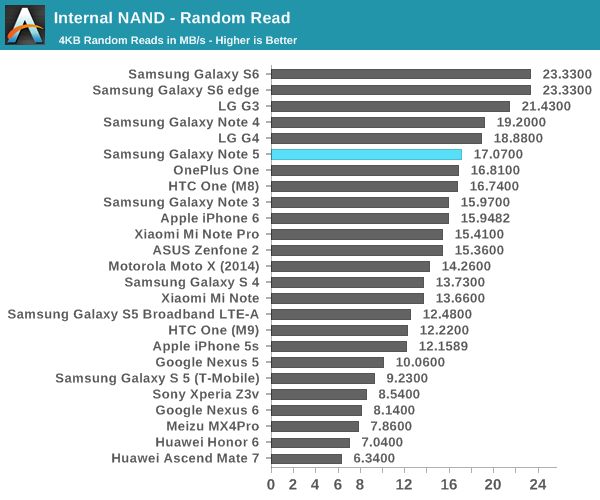
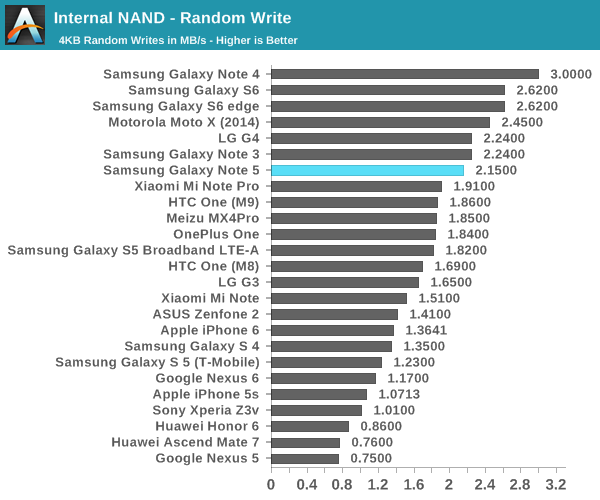
Interestingly, the Note5 regresses a little bit in storage performance relative to the Galaxy S6, which is likely due to the shift to Toshiba's NAND. However, this difference is small enough that in everyday use it's unlikely that it will be noticed. Performance over time should be acceptable as well.










225 Comments
View All Comments
Sailor23M - Saturday, October 3, 2015 - link
Well said.just4U - Wednesday, October 7, 2015 - link
While not a fanboy.. (it's a phone for (censored) sake..) I do use Samsung phones pretty much exclusively these days simply because I am familiar with them and I've yet to see a company make one I like better.. That being said.. I am a long reader and commenter here as well.. and I certainly don't see any hate-on for any company or love-in for that matter.Occasionally some reviewers may know they have a certain amount of bias for some companies and may go overboard in trying to be fair ..coming across as to critical.. but that's pretty rare.
Tech_guy - Friday, October 2, 2015 - link
Apple is designing extremely fast chips these days with amazing performance combined with iOS 9, it's hard to deny that iPhone 6s is the leader right now, by a LONG shot.nerd1 - Friday, October 2, 2015 - link
Only thing 6s is better is better singlethread performance and GPU. 7420 still has better multithread performance (which android does use, says anandtech article!) and comes with better and larger display, smaller and lighter device, and true wacom pen and better camera.I just don't get it how 6s is "the leader" as it lacks in many division compared to now old GS6.
Tech_guy - Friday, October 2, 2015 - link
It's not about the quanity of your cores but their quality. Just look at how Intel obliterates AMD because of their stronger IPC in each core. It's not of the same Apple has set the single core benchmark so high that others will HAVE to focus on single core performance. What some real world comparisons of iPhone 6s vs Note 5, anytime it's a larger app like a game or something the iPhone 6s just destroys those weak cores in the Exynos 7422.thedons1983 - Sunday, October 18, 2015 - link
What a moronic comment! If your assertion were actually true, then literally everyone would buy an iPhone. They don't, however, because not everyone wants to suck on apples tainted teat. Their software is utter garbage, and the only reason they close it down so much, is because they know that it would simply break otherwise. IOS is woeful, as is OS-x, hence why user rates are so incredibly low. Even windows 8, which lots of people hated, has user numbers that OS-X could only dream of. Primarily, it's because windows is just better. Android beats IOS in almost every respect, and the only people that can't comprehend that, are idiot fanboys like you. You are actually, and truly, pathetic.Sailor23M - Saturday, October 3, 2015 - link
I have been a regular reader since 2003/04 time period - so a good 10+ years. Although I am an Apple user I do feel the site has progressively increased their bias/tilt towards Apple. If its true that "Galaxy Phones are pushing 4 times more pixels" then this should have been mentioned in the review.Kuzi - Saturday, October 3, 2015 - link
Galaxy S6/Edge/Note 5 resolution:2560x1440= 3686400 pixels
IPhone 6/6S resolution:
1334x750= 100500 pixels
The Galaxy phones are pushing 3.68 times more pixels than iPhone 6 & 6S.
Peichen - Monday, October 5, 2015 - link
Note 5 should be compared with iPhone 6s PLUS, not the regular size one. QHD on the regular S6 is just stupid but consider Samsung cheats with the sub-pixels counts on AMOLED the smaller screen does need QHD to not show pixels.Kuzi - Tuesday, October 6, 2015 - link
Even though the Galaxy S6 uses a non standard pixel arrangment, it's 575 PPI screen is much sharper than the comparatively low res (by today's standards) 325 PPI screen of the iPhone 6S.